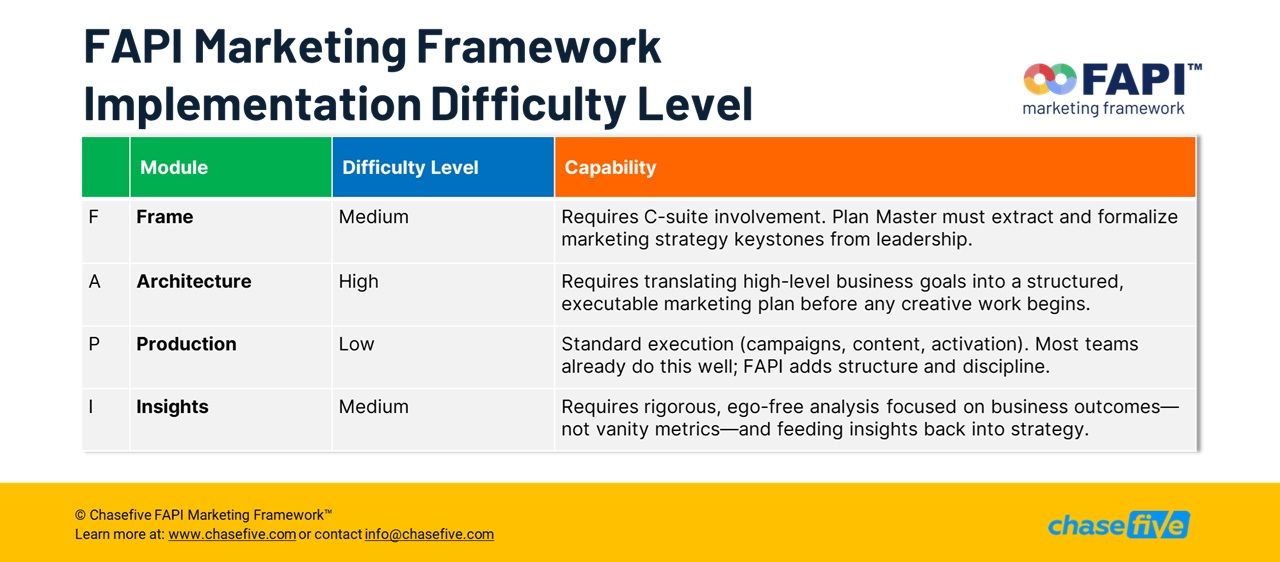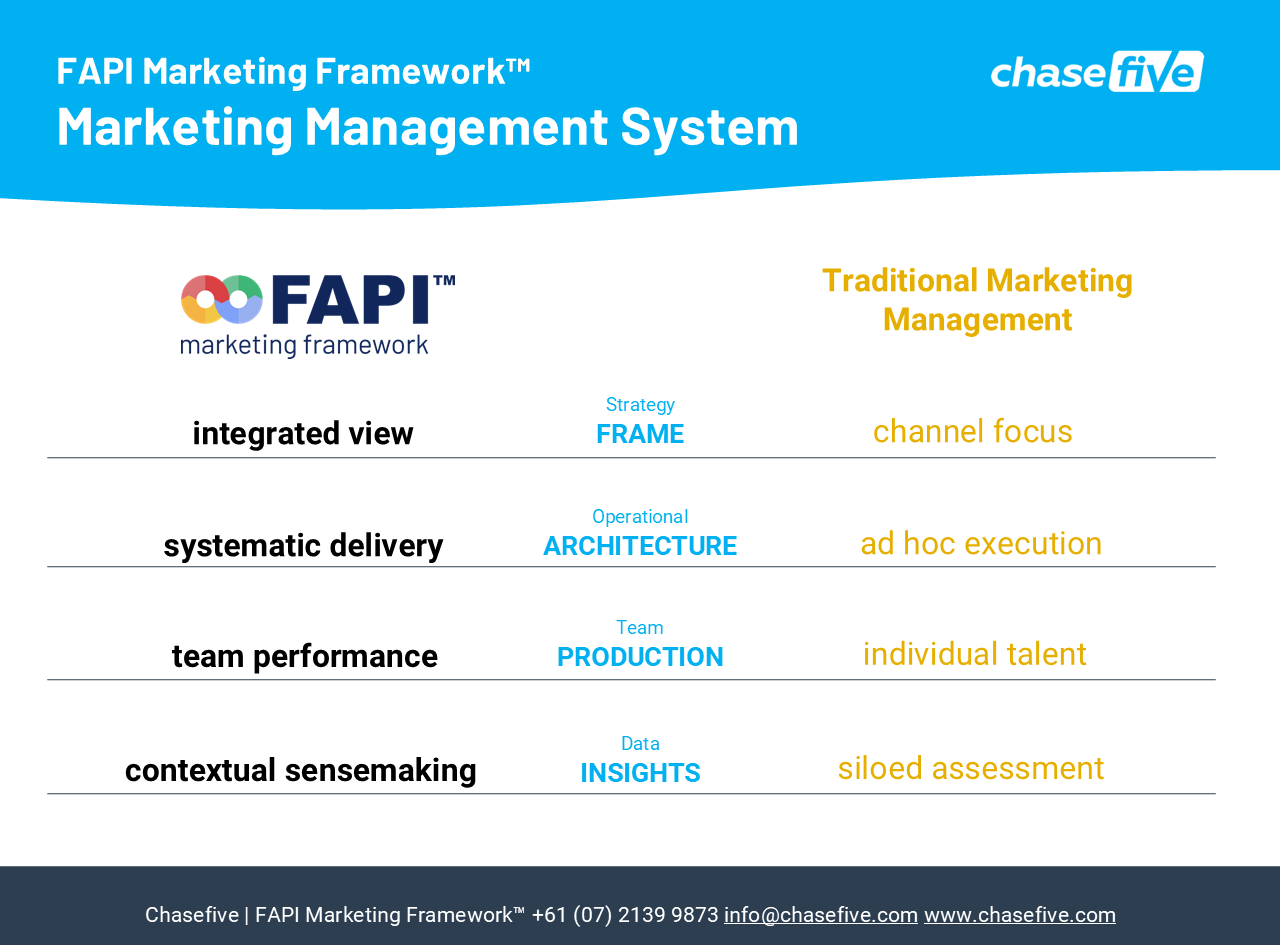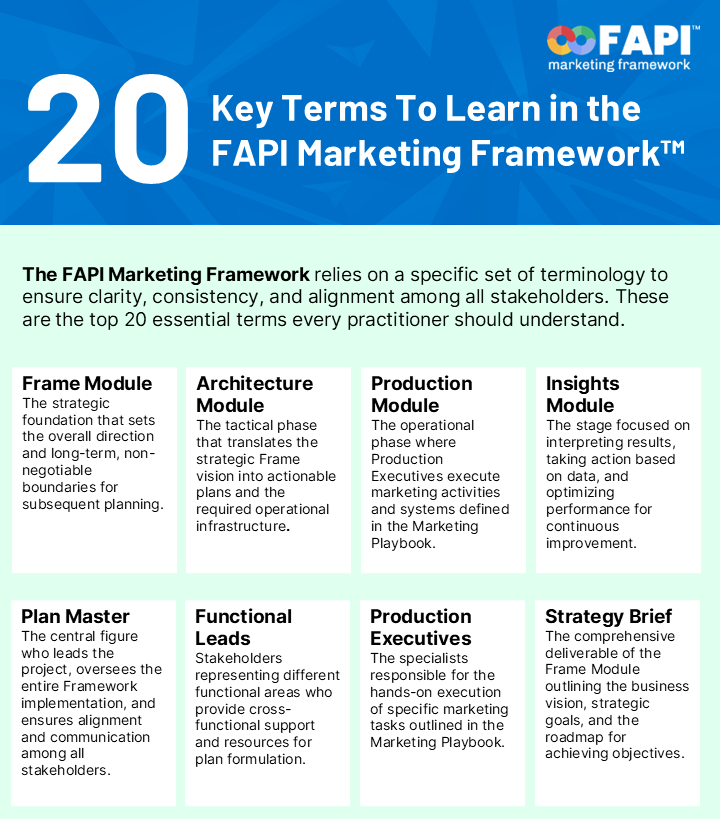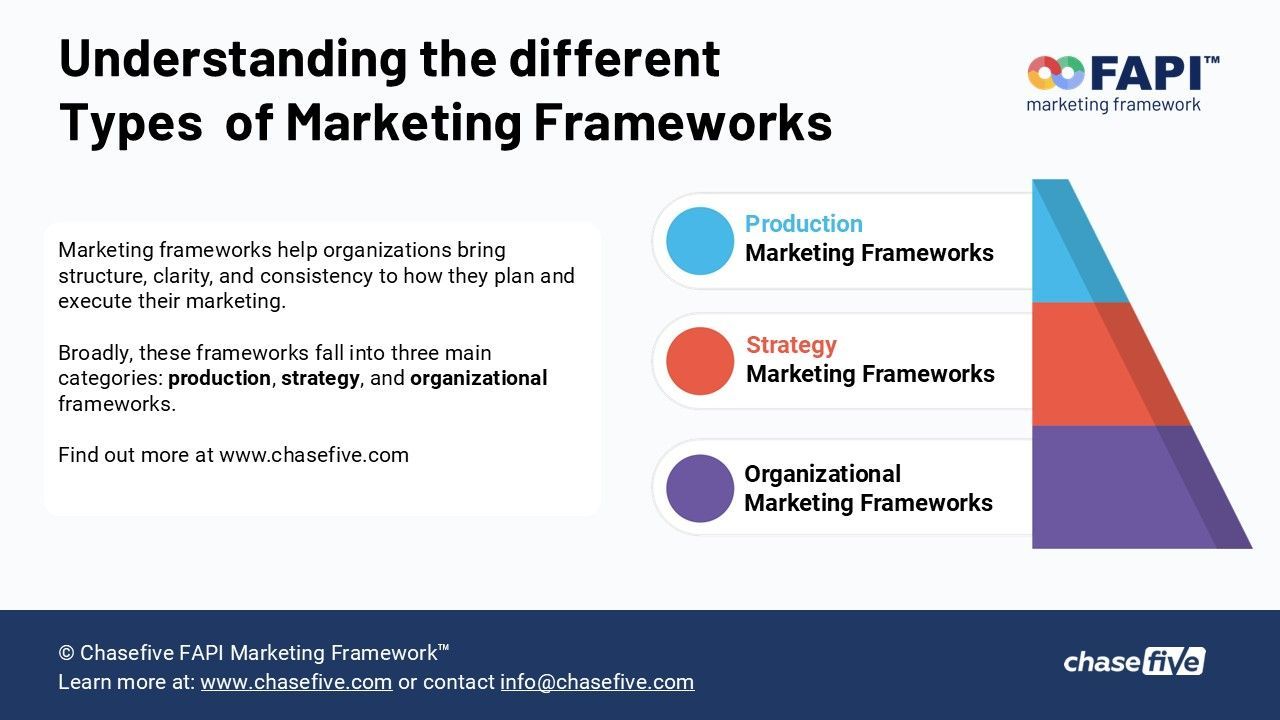How to align your MarTech stack with business strategy and operations
In the increasingly complex world of marketing operations, deploying the right marketing technology (MarTech) requires more than just selecting the latest tools. It requires a structured approach that aligns with both productivity and performance objectives. The FAPI Marketing Framework™, developed by Chasefive, offers a strategic blueprint for this process through a dual-lane deployment model: the Productivity Lane and the Performance Lane.
This two-swimlane schema ensures MarTech implementation is both operationally efficient and strategically impactful.
Each lane comprises four progressive stages: Core Logic, Business Processes, Systems, and Outcomes. Let’s take a look at how this view helps businesses structure their MarTech stack for maximum effectiveness.
1. Core Logic. Defining the Foundation
Every successful MarTech deployment begins with a clearly defined Core Logic. This stage sets the fundamental principles that guide how tools and processes are structured.
- In the Productivity Lane, the Core Logic is rooted in the
Marketing Operational Structure. This includes clearly defined marketing roles, scopes of work (SOW), and team responsibilities, ensuring everyone understands their role in the execution engine.
In the Performance Lane, the Core Logic is defined by the Marketing Strategy Model. This includes your resource allocation rationale and how well these decisions align with broader strategic objectives. It ensures that performance tools serve a purpose beyond execution; they support strategic goals.
2. Business Processes. Structuring Workflows
With foundational logic in place, the second stage involves building out Business Processes that serve as the operational spine for the MarTech stack.
Productivity Lane processes include clear marketing production workflows, defined roles and rituals, and coordinated resource allocation. These ensure work moves efficiently across teams with clarity and consistency.
At the same time, the Performance Lane processes focus on end-to-end data flow and seamless performance data capture, integration, and analysis.
This structure enables a holistic view of marketing outcomes and supports evidence-based decision-making.
3. Systems. Selecting the Right Tools
Only after the processes are in place should technology tools be evaluated, selected, and integrated.
Productivity Lane systems include your management tools, such as collaboration platforms, project management software, and administrative solutions that keep operations running smoothly.
Performance Lane systems are your marketing
campaign tools. These include platforms for campaign activation, tracking, and optimization, ensuring marketing efforts are tied to measurable business goals.
4. Outcomes. Driving Results Through Structure
The final stage of the MarTech schema links tools to their outcomes.
The Productivity Lane focuses on driving operational productivity, grounded in marketing structure and workflows, which helps teams deliver more efficiently and consistently. Therefore, the outcomes measured in the Productivity Lane are linked to production metrics, examining efficiency and execution against operational targets.
The
Performance Lane focuses on strategic and commercial performance, as it is tied to the marketing model and data flow, enabling the achievement of customer-specific outcomes aligned with commercial objectives. The outcomes measured in the Performance Lane are linked to commercial targets.
The Chasefive MarTech Deployment Schema is designed to ensure that every technology decision in marketing is made in context, not in isolation.
It brings structure and strategic alignment to MarTech implementation by dividing the deployment process into two interconnected project lanes.
At its core, this schema is about relevance—ensuring each tool, process, and integration directly supports either operational efficiency or commercial outcomes. Rather than selecting technology based on feature sets, vendor hype, or isolated departmental needs, the FAPI Marketing Framework™ model anchors decisions in a broader strategic and operational logic.
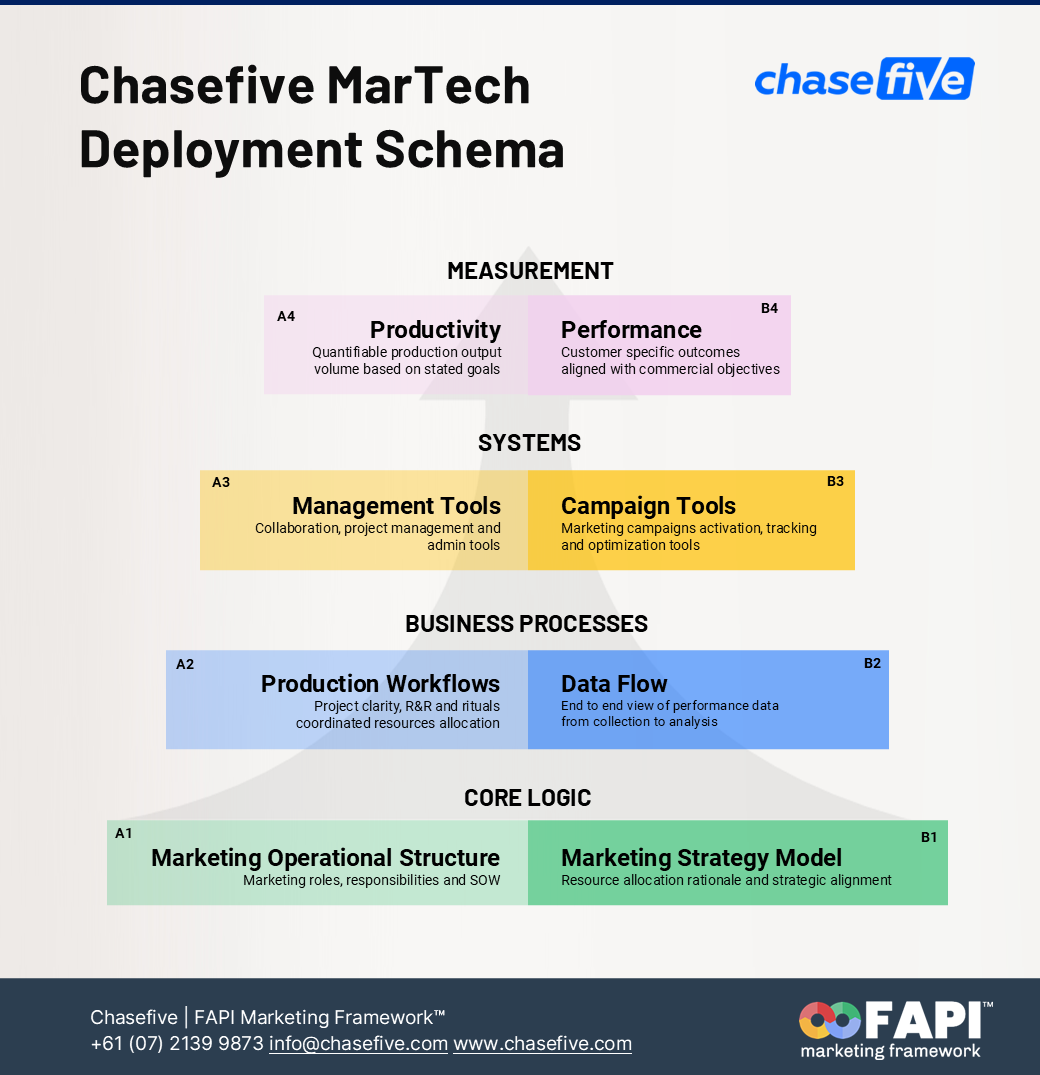
Is Your MarTech Stack Structured for Success?
Many organizations invest heavily in MarTech without a clear deployment schema, resulting in underused tools, fragmented processes, and unclear ROI. By applying the two-lane model of the FAPI Marketing Framework™, marketers can ensure their MarTech stack is not only technically functional but also strategically aligned.
Ask yourself:
- Are your MarTech tools selected on a solid foundation of logic and process?
- Does your stack equally support productivity and performance?
- Can you draw a clear line from your tools to your commercial outcomes?
If not, it may be time to reframe your approach through the FAPI Marketing Framework™ lens, ensuring your MarTech deployment is as strategic as the campaigns it supports.
